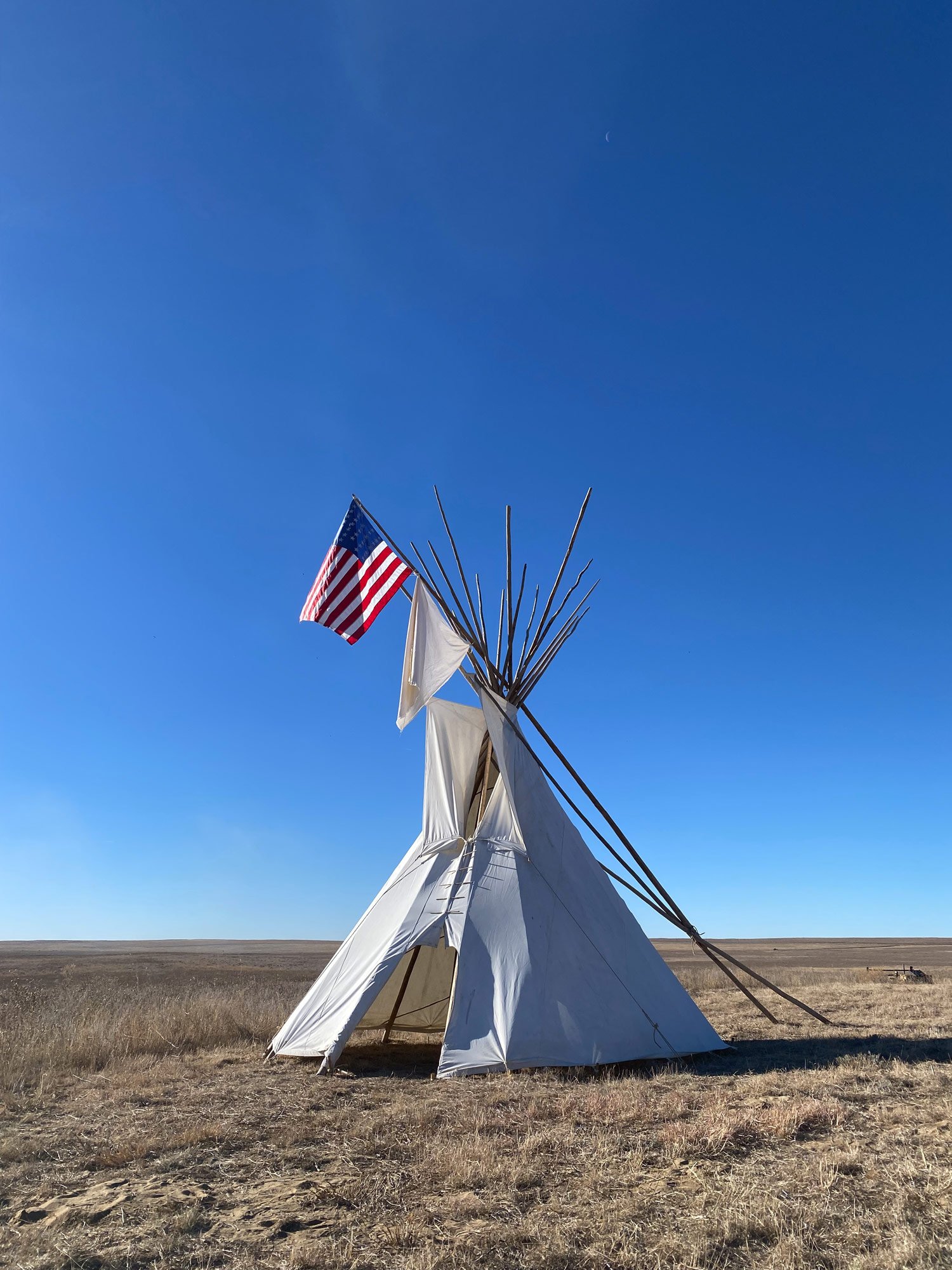
Occupation & Broken Treaties
The Cheyenne and Arapaho people at Sand Creek migrated south and west from the forests and lake country of Minnesota toward the Great Plains and the Rocky Mountains arriving in what is now Colorado around 1815.
The United States government established policies to benefit and protect settlers and the railroads in their expansion westward. Treaties between the United States government and tribes were meant to establish borders and prescribe the relationship between the U.S. and tribes as independent nations with self-determination and self-rule.
“It is our manifest destiny to overspread the continent allotted by Providence for the free development of our yearly multiplying millions.”
President Jefferson’s 1803 Louisiana Purchase was seen as an outlet for the westward expansion of the nation. Military explorations into the new territory wrote off the plains of Colorado as the “Great American Desert.” In reality, the West was not an empty place to be filled by Anglo-Americans, it was already inhabited by a vast number of American Indian tribes as well as French and Spanish settlers.
1803
The Cheyenne signed the Friendship Treaty, admitting they resided within the territorial limits of the United States, acknowledging their supremacy, claiming their protection and admitting the right of the United States to regulate all trade and intercourse with them.
1825
With the westward expansion, the Santa Fe Trail became a trading route bringing settlers into increasing contact with the Native American tribes already on the land. Bent, St. Vrain & Company established a trading fort on the trail and engaged in years of peaceful trade with the Cheyenne and Arapaho. By the 1840s, Bent, St. Vrain & Company was doing a larger business than any other American company with the exception of John Jacob Astor’s great fur company.
1833
In the Treaty of Fort Laramie, tribal leaders agreed to allow safe passage for the emigrant trains in exchange for treaty lands protected from American encroachment. The treaty recognized nearly 75,000 square miles including approximately 40,000 square miles in Colorado as the domain of the Cheyenne and Arapaho tribes.
1851
Encroachment into tribal lands continued with the Cheyenne and Arapaho tribes seen as impediments. The 1859 gold rush brought 100,000 emigrant “59ers” to Colorado Territory over the next decade, settling on land designated in the 1851 Fort Laramie Treaty for the Cheyenne and Arapaho Tribes.
1859
American Progress, John Gast, 1872
Courtesy the Library of Congress
“The whole purpose of the treaty was to clear away Indian land claims to the mining region. The government forced the issue at Fort Wise simply because whites wanted the land.”
The Fort Wise Treaty reduced the tribes’ holding to less than one-tenth of what they had been granted at Fort Laramie.
1861
In the Battle of Glorieta Pass, New Mexico, Major John M. Chivington led more than 400 Union soldiers in successfully stopping a Confederate force from Texas advancing into the Southwest. For his role, Lt. Edward Wynkoop of the 1st Regiment Infantry, Colorado Volunteers, was promoted to major and went on to assume command of Fort Lyon, on the Santa Fe Trail.


